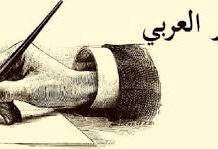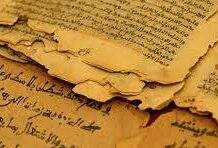Birth Development and Characteristics of Arabic Poetry
Birth Development and Characteristics of Arabic Poetry
Birth Development and Characteristics of Arabic Poetry
Poetry is the oldest, most complex, multi-faceted, most controversial, and widely criticized branch of literature. Poetry dominated the world literary empire for centuries till the advent of prose literature. But no one has come up with a definitive definition of what poetry is. Poetry has been defined differently by different scholars, although one definition does not match the other. Whatsoever the definitions are, by poetry, we mean an ornamental composition where emotion predominates.
Arabic, like most of the world’s languages, has a rich collection of poetry. None can say definitely when Arabic poetic literature originated but there is some testimony that the origin of Arabic poetry dates back to pre-Islamic times. But it is a matter of regret that no literary work prior to the fifth century has survived to the present day.
Scholars estimate that more than two hundred poets were born in Arabia between the beginning of the 5th century AD and the year 622 AD and that it was they who brought Arabic poetry to a high stage of development. Among the poets, born during that time, the most prominent were Imraul Qays, Zuhair bin Abi Salma, Tarafa bin Al-Ab’d Tarafa bin Al-A’bd, Labid bin Rabiya, Antara bin Shaddad, Amar bin Kulthum, Haris bin Hillija, Al-Nabigha, Al-Asha, Hatim Tai, Abid bin Al-Abras, Abid bin Salat, Al-Shanfara, and Al-Shamaul bin Adia. These poets composed their poetry orally. It is because at that time there was no formal literacy among the Arab Bedouins. So they had to rely on memorization. But in the course of time, only the most essential compositions were memorized and the rest was lost from human memory. The literature of the pre-Islamic period, therefore, disappeared from the pages of history due to a lack of proper preservation. Only a small portion of them was compiled in the works of some compilers during the Islamic period. A study of the poems preserved in those collections suggests that the poems of the pre-Islamic era were the basis of reflection on all aspects of the family, social, political, cultural, and religious life of the poets of that era. The content of their poems was also diverse, such as love, feud, condemnation, grief, nature, animals, etc.
The common features and themes of pre-Islamic poetry are discussed in brief below:
Love
A study of pre-Islamic poetry reveals that a large number of poets started their poems with the theme of love. For example, Imraul Kaishe, the greatest poet of the pre-Islamic era, begins his famous Muwallaka poem with a description of his beloved’s abandoned abode. Similarly, poets like Zuhair bin Abi Salma, Labid bin Rabiah, Amar bin Kulsoom and others have started their poetry with love stories. For them, love was the motivation for survival, their constant companion. They were unprecedented, innovative, and sensitive in describing the physical beauty of their beloved. For example, some verses from Imraul Kaiser’s Muwallaka have been quoted below:
” I’ve got into those women’s inner chamber
Where no man entered before
And played so much.”
Sectarian Feud
The sectarian feud is a common theme in pre-Islamic Arabic poetry. At that time the Arab people were divided into many tribes and clans and there were frequent quarrels among themselves. One tribe wanted to dominate another tribe. As a result, the conflict continued from generation to generation. Each tribe had its own poet, and as a representative or mouthpiece of his tribe, he embodied the issues of heroism, valor, and pride of his tribe through poetry and denounced and rebuked the people of the opposition. So by studying pre-Islamic poetry, we can see a glimpse of the social, cultural, and political conditions of the time. For example, Zuhair bin Salam provided a detailed description of the long-standing dispute between the Awas and the Zubian sects at that time. Similarly, the poem of Tarafa bin al-A’bd contained the injustice done to him by his brothers.
Praise and Eulogy to Patrons
Another major theme of Pre-Islamic poetry was the praise and eulogy to the patronage of poets. At that time, most poets sought the patronage of leading personalities, courtiers, influential people, etc., and wrote poems praising their generosity, kindness, fame, and qualities. In return, they received donations, presents, etc. from the patrons and thus they made a living. Al-Nabighai, for example, received royal favor by describing the glory of the kings of Hira, and he had the privilege of spending almost 50 years of his life in the royal court of the kings of Hira.
Animals
All of the Muwallaka poets made references to various animals such as camels, horses, lions, tigers, etc. Imraul Kaish has a detailed description of camels in his ‘Muwallakat’. In the same way, the poet Tarafa bin Al-Abd makes a description of the camel’s back, thighs, head, neck, height, chest, shoulders, thighs, buttocks, hunting style, etc.
Wine and Merriment
Another theme of pre-Islamic poetry is wine and merriment. Poems by Imraul Qais, Antara bin Shaddad, Hilliza, and Sanfara have a theme of wine and merriment.
Religion
Poems of some pre-Islamic poets have been found guilty of obscenity, although the themes of morality, humanity, benevolence and religious devotion have also been found in the poetry of some poets. For example, the poets such as Zuhair bin Salma, Labid bin Rabiah, Al-Nabigha, Hatim Tai, Umayyah bin Abi Salat, etc dealt with the themes of humane qualities. The poem, written by Labid bin Rabia after his conversion to Islam, deals with the themes of Allah, the ephemerality of human life, the Day of Judgment, and other Islamic philosophies. For example, the following lines of poetry may be quoted from Labid bin Rabia:
“Everything except Allah is worthless.
All happiness will disappear unconditionally
……………………………
The last trial day will unfold
All your actions in front of you
And Allah, the Almighty, will judge your deeds.
Thus the poets of the pre-Islamic era wrote poems on almost every theme of their daily life and by reading their poems we get a glimpse of all aspects of the social, cultural, political, and religious life of that era. After all the poets of this era tried to paint the picture of that time through their poems and succeeded to a great extent. Therefore, pre-Islamic poetry is called “The Register of the Arabs.
In addition to the themes of the pre-Islamic poems mentioned above, the Arabic poets naturally entered the world of poetry with strong poetic power and established poetry as a powerful medium of expression.
In addition to using metaphors, similes, symbols, and other literary ornaments, they used abundant innovative imagery in their poems. These stylistic features of the Pre-Islamic poems are discussed below in brief:
Simile
The simile is a type of figure of speech in which an object or the quality of an object is compared with another dissimilar object to increase the appeal of a thing. Poets of the pre-Islamic period frequently used similes. For example, they compared a woman to a full moon, egg, puppet, cow, deer, etc. They compared the face of a woman with a gold coin, the breast of a woman with the nose of a deer, the smell of sweat coming out of a beloved’s body with musk, and the saliva with the sweetness of honey.
Metaphor
A metaphor is a figure of speech in which one object is thought to be completely another object. The use of metaphorical rhetoric is quite common in Arabic poetry. The pre-Islamic poets imagined a man to be a tiger, lion, hyena, etc. On the other hand, a woman was taken as a deer, goddess, moon, star, etc.
Symbols
The pets of the pre-Islamic era subconsciously used many objects, animals, planets, and stars as symbols. For example, they used tigers, lions, hyenas, etc. as symbols of violence, force, semen, dominance, etc. The appeal of their poetry was greatly enhanced by imagining the moon, stars, constellations, Taurus, and the sea as symbols of women.
Imagery
In addition to the metaphors, similes, and symbols mentioned above, the poets of the pre-Islamic period were adept at creating unprecedented imagery. For example, a Pre-Islamic poet named Tarafa bin Al Abd drew strong imagery of his desire to meet his beloved as below:
I ride my desire of union with my girlfriend on the back of a black camel on a day-to-day trip, which runs with a fat stick like a worthwhile infantry, a corpse carrying on a stretcher, on a wide path like the moon. ”
Similarly, Amr bin Kulthum also invoked the imagery of the different parts of his girlfriend as below:
“The arms are as full as a barren camel,
The two breasts are swelling, touchless and soft
Ankle worn feet are as bright as a tube made of elephant teeth
She has become like a calf-losing camel in the separation of pain
And like a mother who has lost her child. ”
The poetry of the pre-Islamic period was unprecedented, unparalleled, and innovative in its poetic power which became the model of inspiration for poets over the ages. 0 0 0.
Birth Development and Characteristics of Arabic Poetry
Birth Development and Characteristics of Arabic Poetry
Read More: A Brief History of Arabic Literature: Early Islamic Period (622 AD-661 AD)
Birth Development and Characteristics of Arabic Poetry
N.B. This article ‘Birth Development and Characteristics of Arabic Poetry’ originally belongs to the book entitled ‘A Brief History of Arabic Literature: Pre-Islamic Period (500 AD-622 AD) by Menonim Menonimus. Birth Development and Characteristics of Arabic Poetry
Related Searches:
- Arabic Poetry: Origin and Development
- The Status of the Arabic Language
- The Characteristics of Arabic Language
- A Very Brief History of Arabic Language
Books of Literary Criticism by M. Menonimus:
- World Short Story Criticism
- World Poetry Criticism
- World Drama Criticism
- World Novel Criticism
- World Essay Criticism
- Indian English Poetry Criticism
- Indian English Poets and Poetry Chief Features
- Emily Dickinson’s Poetry-A Thematic Study
- Walt Whitman’s Poetry-A Thematic Study
- Critical Essays on English Poetry
- Tawfiq al-Hakim’s Novel: Return of the Spirit-An Analytical Study
- Tawfiq al-Hakim’s Novel: ‘Yawmiyyat Naib Fil Arayaf’-An Analytical Study
- Analytical Studies of Some Arabic Short Stories
- A Brief History of Arabic Literature: Pre-Islamic Period (500 AD-622 AD)
- A Brief History of Arabic Literature: Early Islamic Period (622 AD-661 AD)











